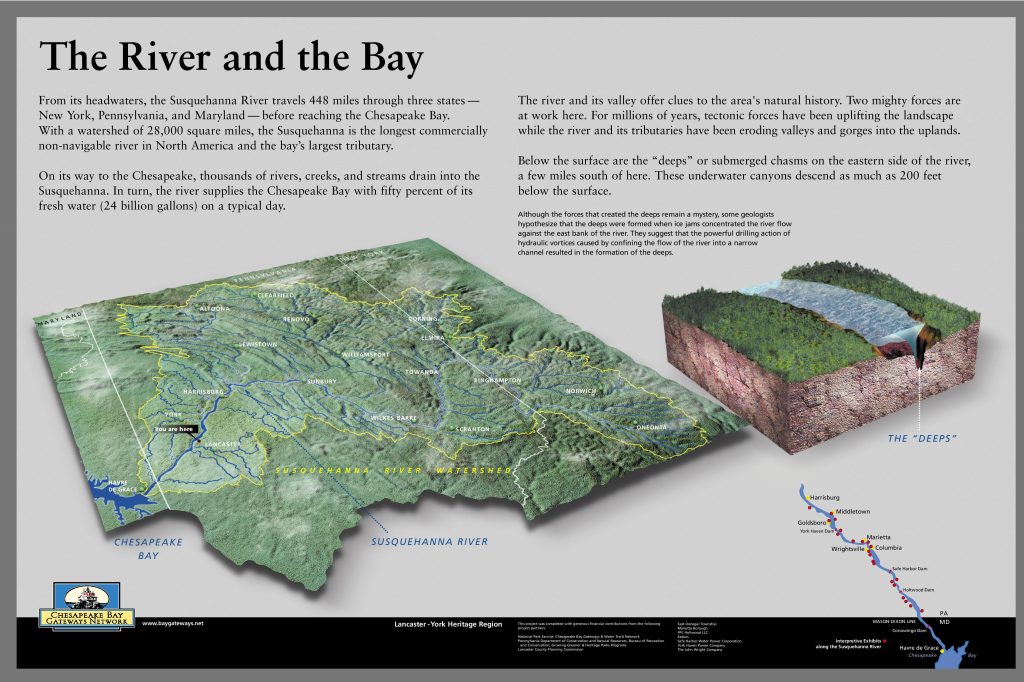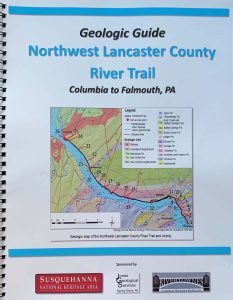River Roots: Underground Railroad at Hybla
River Roots is Susquehanna NHA’s blog series featuring history from York and Lancaster Counties that showcases the Susquehanna River’s historic, cultural, and natural resource contributions to our nation’s heritage.
Stories of the Underground Railroad are inherently difficult to uncover and share. Unlike military or political history, few primary written records exist because assisting those escaping slavery was illegal and punishable with prison time and fines. Many enslaved people escaped without assistance and many supporters of the underground railroad were involved only periodically or occasionally. Stringing together the routes of the network, safe houses, and transportation methods has become a challenging but essential research interest of historians across the United States.
The Lower Susquehanna River Valley is particularly unique as the counties of York and Lancaster were hotbeds of abolitionist sentiment and Underground Railroad activity. Stories have been passed down from generation to generation about barns, basements, and cellars being used as hiding places. Historians sift through wills, deeds, newspaper ads, and genealogical information across multiple states and countries to tell the story of enslaved people, who became the agents of their own liberation. These accounts should not go unnoticed because the Underground Railroad story is a classic American story of “underdogs fighting the system with or without outside assistance.” (Leroy Hopkins in introduction to The Ground Swallowed Them Up.)
In the Susquehanna National Heritage Area, one site holds more definitive Underground Railroad history and significance than many others. It is the Hybla property just outside the town of Wrightsville in Hallam Township. Many people may know this property as the Mifflin Farm or Wright Mifflin Farm.
The Home at Hybla
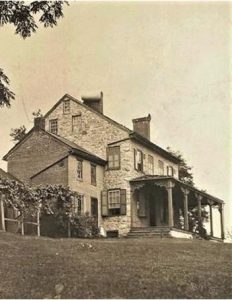
The first purchaser of the property was John Wright Sr., who established the ferry across the Susquehanna River in 1730 from present-day Columbia. He purchased hundreds of acres on the west side of the river in what became Hallam Township and passed it down to his children. There is contradicting accounts as to whether John Wright Sr. or his son James Wright erected the home on the property. James Wright died in 1788 and divided the property between his children. James’s daughter, Susanna, was given a 108-acre tract on which the Mifflin house is located. Susanna Wright Mifflin and her husband Jonathan Mifflin moved into the home on the property in 1800 after they married. They named the property Hybla.
After their deaths in 1829 and 1840, their son Samuel W. Mifflin lived at Hybla until 1846. During the nearly 50 years that the Mifflin family called Hybla home the Underground Railroad became the primary method to free enslaved people from southern states that refused to abolish the practice. Pennsylvania and many other Northeastern states had enacted gradual abolition of slavery before the turn of the century. The Wright and Mifflin families were staunch abolitionists. Their Quaker religion held that all people were equal under the eyes of God. Therefore, they should all be treated equally. It was not overnight that the Quakers chose to vehemently oppose slavery, but over the course of a century between 1675 – 1775 the religion developed a solid stance against the practice. Susanna, Jonathan, and their son Samuel were committed abolitionists publicly denouncing slavery at Quaker meetings and privately channeling freedom seekers across the Susquehanna River for half a century.
Underground Railroad at Hybla

In the early 1880s, Dr. Robert C. Smedley decided to record and publish accounts of Underground Railroad experiences in Southeastern Pennsylvania from interviews with its agents, conductors, and stationmasters. His narrative showcases primarily the free white supporters of freedom seekers and captures their memories of Underground Railroad activities. Smedley features Samuel W. Mifflin in his work History of the Underground Railroad in Chester and the neighboring counties of Pennsylvania. The account offers multiple stories of fugitives staying on the Hybla property, in the home, as well as being shuttled across the Susquehanna. Each short narrative showcases an important element or principle of the Underground Railroad’s operation.
“As far back in his boyhood as he can remember Samuel was accustomed to seeing fugitives passed along by different members of their family.” On one occasion, he recalled a freedom seeker was hidden in a cornfield and fed day after day by a cousin. The cousin would go out with his gun as if to hunt but his game bag was filled with provisions. (p. 48-49) It was very common for Quakers or abolitionists to offer a safe location on the property but not necessarily in the home. Cellars, barns, and in this instance, cornfields could be used to conceal freedom seekers, allowing them a few hours or days rest and recuperation before continuing their journey.
On a visit home to see his ailing father, Samuel found “the parlor occupied by thirteen fugitives. They comprised two families of men, women, and children whom his elder brother found wandering in the neighborhood. The windows were closed to prevent discovery, and a lamp kept burning all day. They were thus guarded during two days and nights of stormy weather and high water in the Susquehanna which prevented their crossing the river. On the third night they were transferred to the care of Robert Loney who ferried them over to the Columbia shore.” (p. 49)
This story, in particular, reveals an important element of the Underground Railroad that can be misunderstood – that African Americans were only shuttled to freedom by white abolitionists. In reality, African Americans were not passive figures but agents of their own liberation. These two families were found wandering and brought to the home. It is possible they had been assisted by a free Black or another white abolitionist and were told to head to Wrightsville on their path to freedom. It is also possible they headed to Wrightsville from rumors that the river there was the border with Canada. It was a common misconception because of how wide the river was at Wrightsville. Either way, it is important to remember that African Americans undertook the primary risk and struggle for freedom. There was a broad range of experiences and many made it without the support of the Underground Railroad network.
By far the most detailed story Smedley recounts about Hybla is that of Perry Wilkinson, an enslaved man and Baptist preacher. He was brought by a guide to the Mifflin’s at ten in the evening. Although he was offered a bed, Perry would not eat and paced the floor all night. He was thinking of his wife and family whom he had left behind. Perry had been enslaved in Anne Arundel, MD and was hired out on a boat that traveled between his master’s wharf and Baltimore. When his master died, Perry received word from a friend that his widow had decided to sell Perry. As soon as the boat landed in Baltimore, Perry journeyed north, traveling by night and hiding in the woods each day until he reached York and was brought to Samuel Mifflin. (p. 50-51) Although some freedom seekers had the opportunity to plan their journey, many others were forced, like Perry, to make a quick, deliberate, and difficult decision. No matter the choice that Perry made he would be separated from his family in a matter of days. Perry’s story is a representation of a truly dehumanizing nature of the chattel slavery in the United States.
Hybla’s Place in the Network to Freedom
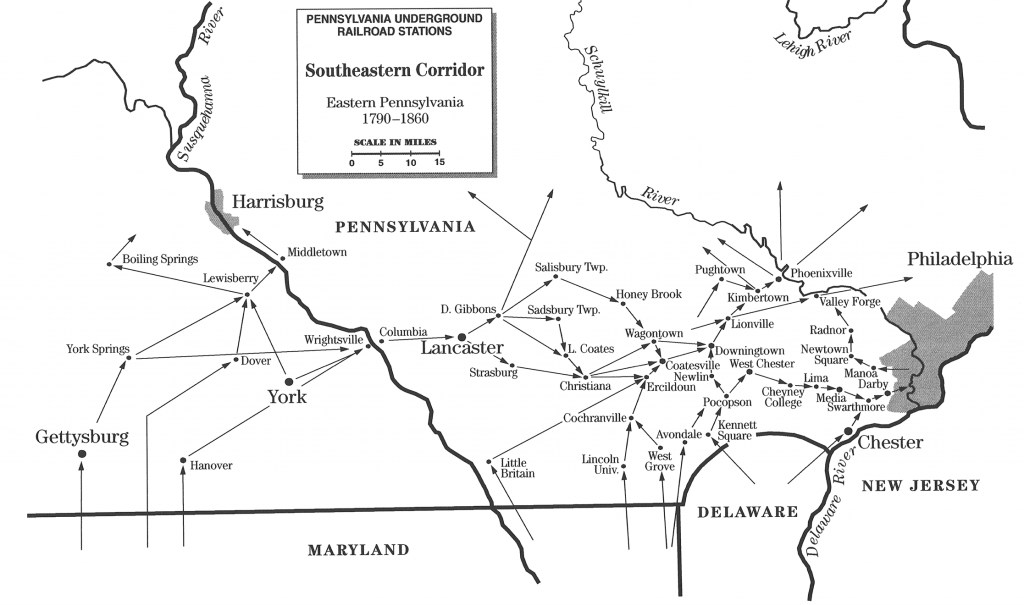
Although there were thousands of unique experiences for fugitives on the path to freedom, historians have found some patterns in the routes. Dr. William Switala, a former professor at Duquesne University, studied these patterns and consistently found that the Underground Network between York and Lancaster County was connected across the river in three primary locations: York Haven – Middletown; Wrightsville – Columbia; and at the Peach Bottom Ferry. The York Haven – Middletown ford and ferry were used by freedom seekers that came through Lewisberry, a primarily Quaker town. Peach Bottom Ferry was primarily used by a conductor in Havre de Grace who would shuttle freedom seekers up through southern York County. The Wrightsville – Columbia connection was used more frequently than the other two for two primary reasons.
- Columbia had a large free black population. When the town was laid out in 1787 the northeastern corner of town was set aside for manumitted slaves. Plus, both Columbia and Wrightsville had many Quaker residents who opposed slavery – particularly the Wright Family.
- The network of Underground Railroad supporters in Wrightsville and Columbia crossed racial lines. There were not white abolitionists working separately from free black abolitionists, they worked together, which offered a variety of safe options even when those hunting fugitives were nearby.
Susanna, Jonathan, and Samuel primarily used the service of Robert Loney to move freedom seekers across the Susquehanna. Robert Loney was an African American boatman who was born enslaved in Virginia in 1815. Loney had settled in Columbia in 1819 when his family arrived after being manumitted. He would utilize a rowboat or raft to carry freedom seekers over to Columbia in the dark of night.
Samuel lived at Hybla until 1846, when his profession as an engineer took him out of state on projects. In the first half of the nineteenth century, the Underground Railroad evolved from a rough network of safe houses to a well-organized system. By 1850, when Congress passed the Fugitive Slave Act, the network had multiple layers, passwords/phrases, and travel tactics. For example, there were many Quaker women who were making large quantities of clean and mended clothing to be used by Underground Railroad station masters to help freedom seekers travel without being spotted as people formerly enslaved. By 1847, African American businessman William Whipper had begun an active role in the network. His lumberyard on the Columbia riverfront modified rail cars used in his business with secret compartments for fugitives from slavery.
The Hybla property will forever hold a pivotal place in Underground Railroad history, as an early, consistently used safe haven for African Americans seeking freedom. Whether they wandered into the neighborhood or were guided there, Hybla was central to the evolving network of black and white abolitionists and the freedom seekers who used that network to gain freedom over bondage.
Preserving the Mifflin House and Its Historic Landscape
Susquehanna National Heritage Area (SNHA), Preservation Pennsylvania, The Conservation Fund, and other partners have collaborated on a project to preserve the c.1800 Mifflin House and farmstead as an Underground Railroad and Civil War historic site since 2017. Kinsley Properties of York has been developing an industrial park around the site since the 1990’s with the Blessing family, long-time owners of the farm. As industrial development moved farther east toward the historic farmstead in 2017, demolition of the house, barn, and outbuildings was proposed, leading to much community debate and legal challenges.
As an alternative to demolition and development, the preservation partners proposed acquisition and adaptive use of the buildings and site as a regional heritage center and visitor attraction, with a historic park, nature preserve, and interpretive trails connected to a river park. The project concept plan, posted on SNHA’s website here, includes over 80 acres of Blessing/ Kinsley property and adjacent public and semi-public lands, including riverfront parcels owned by SNHA. In early 2019, the Blessings, Kinsley, and Hellam Township agreed to a two-year moratorium on demolition to allow the project partners time to develop a viable preservation, reuse, and funding plan for the site. These efforts have generated much local, state, and national support and a positive outcome for this important historic site is expected soon.
Learn More
Learn the Language of Slavery from the National Park Service. https://www.nps.gov/subjects/undergroundrailroad/language-of-slavery.htm
Susquehanna Discovery Center at Historic Mifflin Farm.
Foner, E. (2016). Gateway to Freedom: The Hidden History of the Underground Railroad. New York, NY: W.W. Norton & Company.
Kreutz Creek Valley Preservation Society. “Historic ‘Hybla’ under threat In York County, PA.” http://undergroundrroriginspa.org/wp-content/uploads/2017/03/Case4Pres.Mifflin-2-27-17-R-9RD.pdf
Lloyd, June. “Colonel Jonathan Mifflin, Revolutionary War Patriot and Master of Hybla at Wrightsville.” York Daily Record. PPYR, December 7, 2016. https://www.ydr.com/story/news/history/blogs/universal-york/2016/12/06/colonel-jonathan-mifflin-revolutionary-war-patriot-and-master-of-hybla-at-wrightsville/95089776/.
Merrill, John Houston. Memoranda Relating to the Mifflin Family. Washington: L.C. Photoduplication Service, 1985. https://archive.org/details/memorandarelatin00merr/page/n5/mode/2up?q=hybla
Mingus, Scott L. The Ground Swallowed Them up: Slavery and the Underground Railroad in York County, Pa. York, PA: York County History Center, 2016.
Mingus, Scott. “Historic House Was UGRR Station.” York Daily Record. PPYR, June 15, 2016. https://www.ydr.com/story/news/history/blogs/cannonball/2016/06/15/historic-house-in-wrightsville-was-ugrr-station-and-later-a-confederate-artillery-position/85915916/.
Mingus, Scott. “Jacob Huber Farm Was Rebel Artillery Position during the Skirmish of Wrightsville.” Cannonball, October 9, 2020. https://yorkblog.com/cannonball/jacob-huber-farm-was-rebel-art/.
Schaefer, Elizabeth Meg. Wright’s Ferry Mansion. Columbia, PA: Von Hess Foundation, in association with Antique Collectors’ Club, Wappingers Falls, NY, 2005.
Smedley, R. C. (2005). History of the Underground Railroad in Chester and the neighboring counties of Pennsylvania. Mechanicsburg, PA: Stackpole Books.
Switala, W. J. (2008). Underground Railroad in Pennsylvania (Second ed.). Mechanicsburg, PA: Stackpole Books.
University of Chicago Press. “Founders Online: Virginia Delegates to Supreme Executive Council of Pennsylvani …” National Archives and Records Administration. National Archives and Records Administration. Accessed January 15, 2021. https://founders.archives.gov/documents/Madison/01-03-02-0092.
Wright, Samuel C. Hempfield: the Beginning of Columbia. Lancaster, PA: Lancaster County Historical Society, 1913.




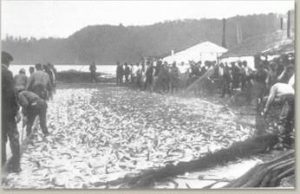
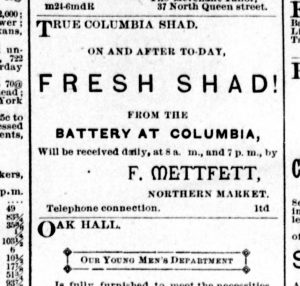

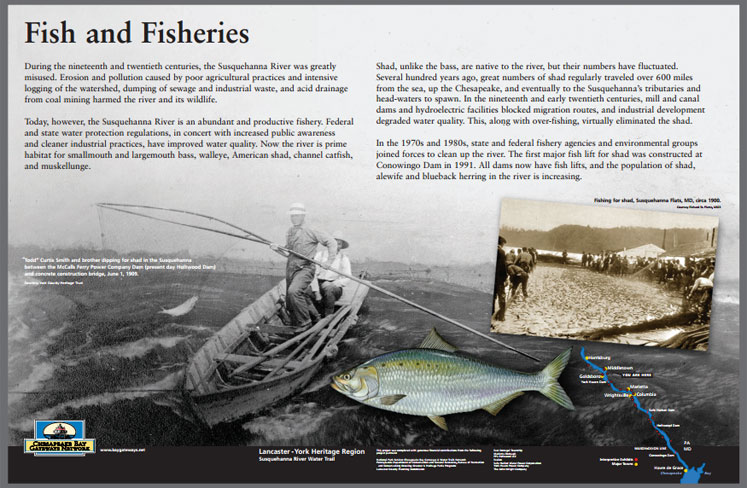

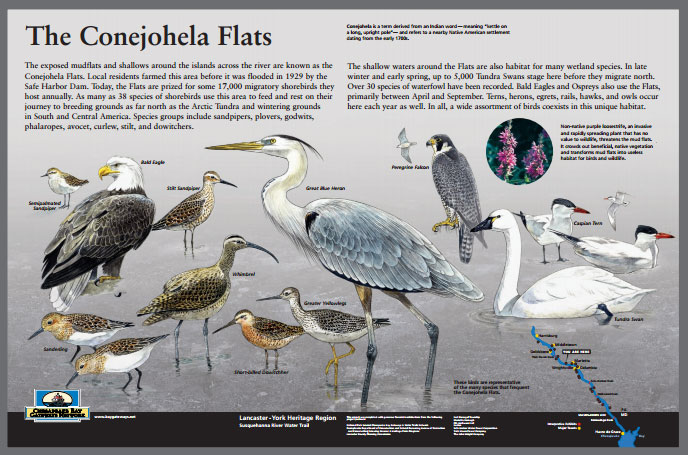
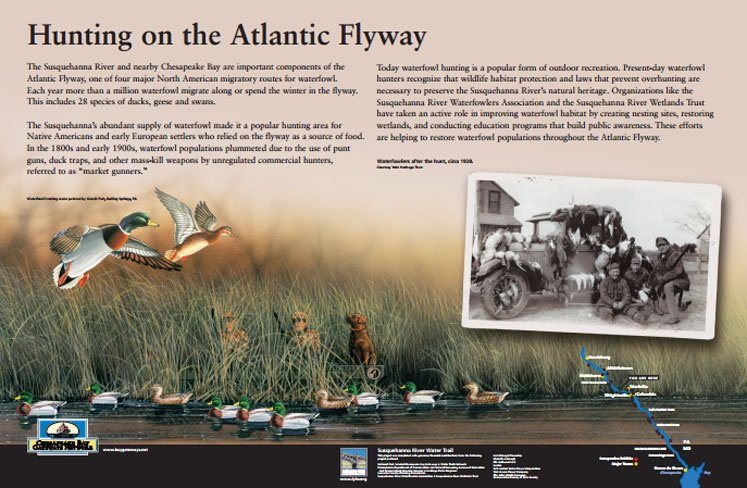


 Tundra Swan
Tundra Swan Great Blue Heron
Great Blue Heron Whimbrel
Whimbrel Stilt Sandpiper
Stilt Sandpiper Semipalmated Sandpiper
Semipalmated Sandpiper Caspian Tern
Caspian Tern Black Tern
Black Tern Greater Yellowlegs
Greater Yellowlegs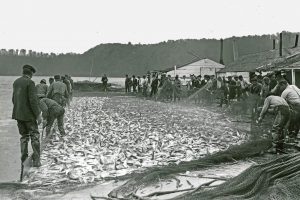
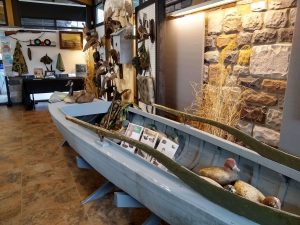
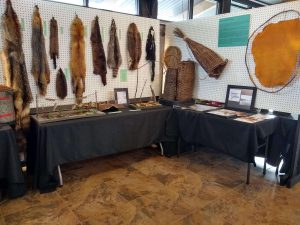


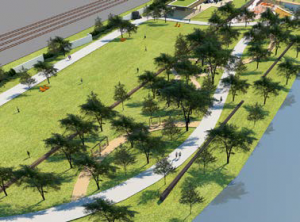




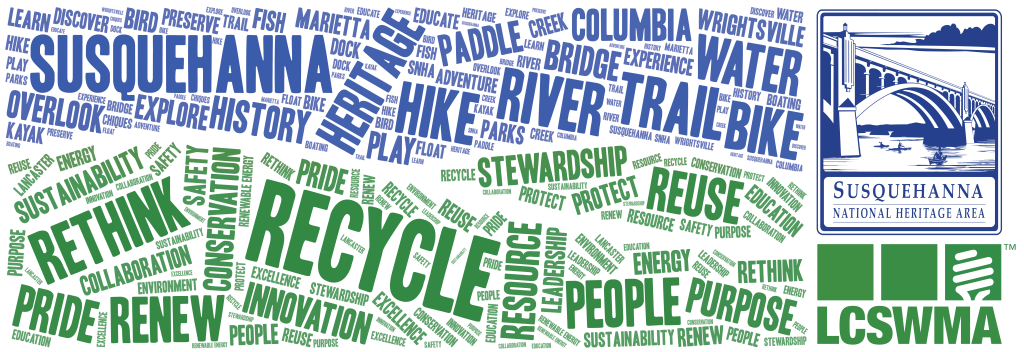

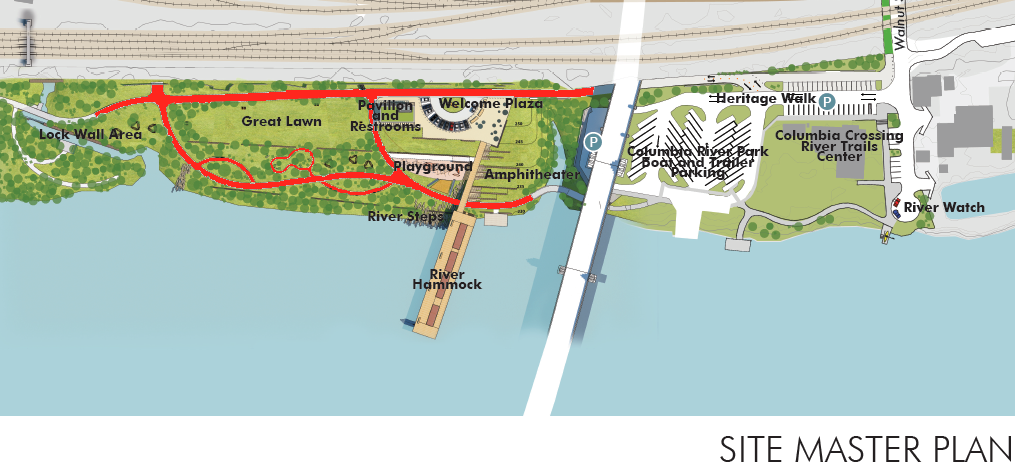
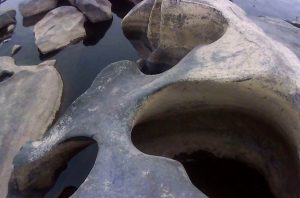
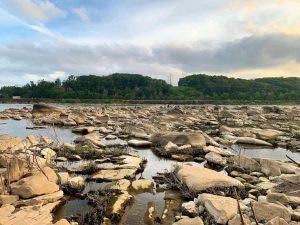
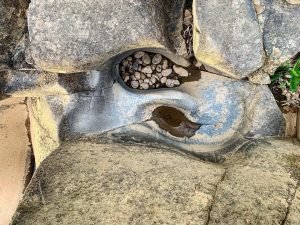
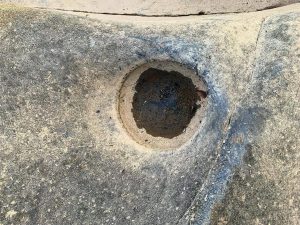
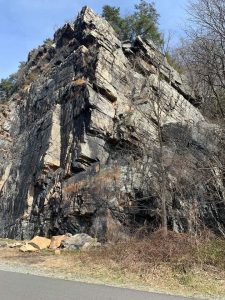 Chickies Ridge is composed of the uplifted Cambrian Chickies Formation, a mapped bedrock unit in Pennsylvania, New Jersey, and Maryland. It is named for Chickies Rock, a popular rock cliff just north of Columbia along the Susquehanna River. According to the United States Geological Survey (USGS), the summit of the ridge is 587 feet above sea level.
Chickies Ridge is composed of the uplifted Cambrian Chickies Formation, a mapped bedrock unit in Pennsylvania, New Jersey, and Maryland. It is named for Chickies Rock, a popular rock cliff just north of Columbia along the Susquehanna River. According to the United States Geological Survey (USGS), the summit of the ridge is 587 feet above sea level.
